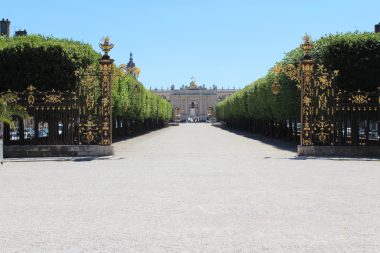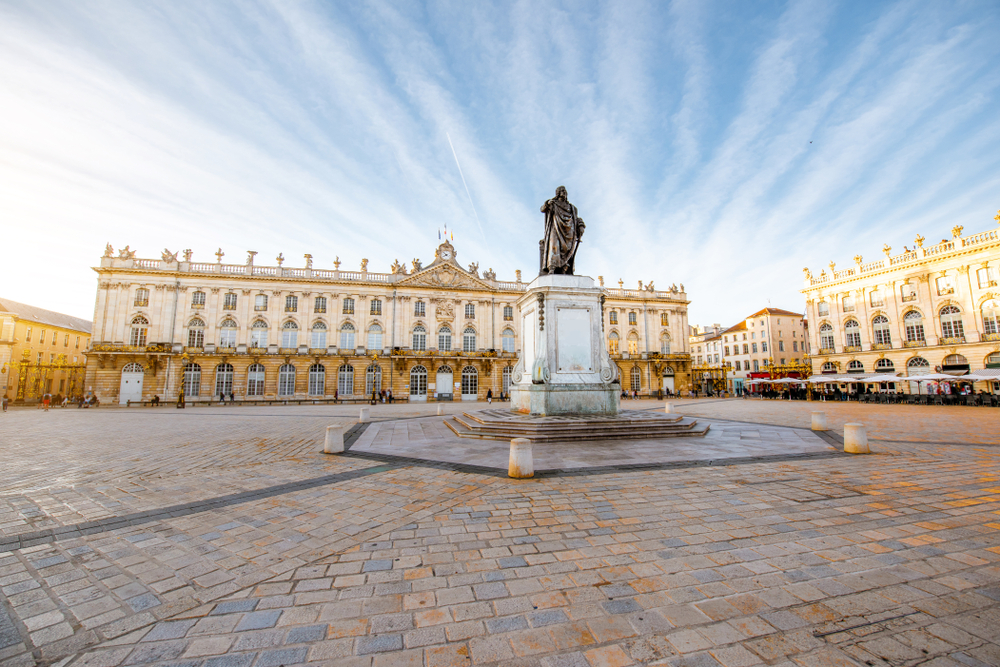Even at first glance, it is clear that Nancy is a city of history, culture and architecture. It is not without reason that it is considered the capital of French Art Nouveau. However, this is only one architectural facet. Renaissance buildings and houses in the style of Art Deco and Classicism draw a unique townscape. The main attraction is undoubtedly the historic old town, the Ville vieille. And in the middle of it all, a jewel: Place Stanislas is one of the most remarkable examples of perfect architecture. This jewel is thanks to the Duke of Lorraine and former King of Poland, Stanislas Leszczyński, who came up with the idea. And, of course, the architect Emmanuel Héré, who implemented it. Together with the adjacent Place de la Carrière and the Place d’Alliance, this ensemble was added to the World Heritage List in 1983.
Past at every turn
The eventful and glorious past can be encountered at every turn in the capital of the Meurthe-et-Moselle department in Lorraine (Grand Est since 2015). The first humans settled in the 8th century BC. on the hills of the city. The mining of iron ore left its mark there. The Romans, on the other hand, left no traces during their rule in Gaul. It was Count Gerhard, Duke of Lorraine, who laid the foundation stone for the later city with the construction of a castle, which bore the name Nanciacum. In the decades and centuries that followed, the signs of war were almost non-stop in Nancy. Again and again, attempts were made to bring the city under the French crown. Emperor Frederick II reduced the city to rubble during the War of Succession. The Thirty Years’ War, the Franco-German War, bloody street fighting during the French Revolution, the two world wars, they all left traces of horror.
Two progressive dukes
Despite all the warlike conflicts, Nancy experienced an unimagined heyday between 1489 and 1608. This was ensured by the two dukes Anton and Charles III. Charles III in particular was considered very progressive and science-oriented. In his time, the southern part of the old town was transformed into the new town. It is striking that the streets form a network of paths that cross at right angles.
Symbiosis of industry and art
In the centre of Nancy is undoubtedly the old town with its historic centre. The small alleys around the Ducal Palace are particularly charming. If you walk from Place Magino to Place Stanislas, you will be confronted with an industrial bourgeoisie around 1900. Shops, banks, newsagents, small restaurants and cultural spaces. If there was one city that knew how to implement Art Nouveau, it was Nancy that became the stronghold of this style. This was thanks to one man: Emile Gallé. Around 1900, an entire generation of artists dedicated themselves to a completely new art form. Industrial production was in full swing at the time.
The artists envisioned a symbiosis of industry, science and botany. The idea was given by Emile Gallé. The artisan was known for his extraordinary Art Nouveau designs of furniture, glass and ceramics. Together with the brothers Auguste and Antonin Daum as well as René Lalique and Gabriel Argy-Rousseau, he founded the later world-famous École de Nancy, which was dedicated to Art Nouveau. Architectural examples of Art Nouveau are scattered throughout the city. In the business district, L’Excelsior, a brasserie from 1910, is one of the most beautiful. The stunning, opulent interior makes the exquisite menu almost a minor matter.
The building of the former seed trade and the bank Crédit Lyonnais, both from 1901, are more reminiscent of an opulent palace than of sober commercial buildings, both outside and inside. Another highlight can be found in Saurupt Park. In this modern garden city, two art movements dominate: Art Nouveau and Art Deco. The district was designed by artists from the École de Nancy. The colour blue is strikingly often represented.
A garden with an aquarium

Finally, in the picturesque four-part Sainte-Marie, you will find the museum of the École de Nancy. The remarkable collection of furniture, art objects and textiles revives the atmosphere of the time. The dining room, designed by Eugène Vallins, is a symphony of sinuous shapes. The ground floor is dedicated to the magnificent glass collection of the founder of the École de Nancy. Here you can admire the artistry of Emile Gallé.
Many of them are valuable one-of-a-kind items. The museum garden is a work of art in itself. You will find wonderful water lily-rich plants, magnificent plants from the early 20th century and probably the most extraordinary aquarium you can imagine. A circular pavilion with stunning stained glass windows houses the aquarium, whose fish can be seen from the ground floor. However, the pavilion can only be visited with permission. It’s worth a try.
Churches and paintings
In addition to all the Art Nouveau beauties, however, you should not miss to take a look at the various churches. The Franciscan church of Saint-François-des-Cordeliers, for example, is the burial place of the Dukes of Lorraine. The baroque church of Saint-Sébastien had a troubled past. During the French Revolution, it served as an insane asylum, then as a straw bed. From 1801 it was finally used again as a place of worship. The Baroque cathedral of Nancy is famous for its organ from 1763, built by Nicolas Dupont. A visit to the Musée des Beaux-Arts is also a must. The 18th-century building houses mostly paintings by French, Dutch and Italian artists. Among them are Tintoretto, Caravaggio, Rubens, Manet and Breughel. By the way, the museum is part of the ensemble on Place Stanislas and is a World Heritage Site.


